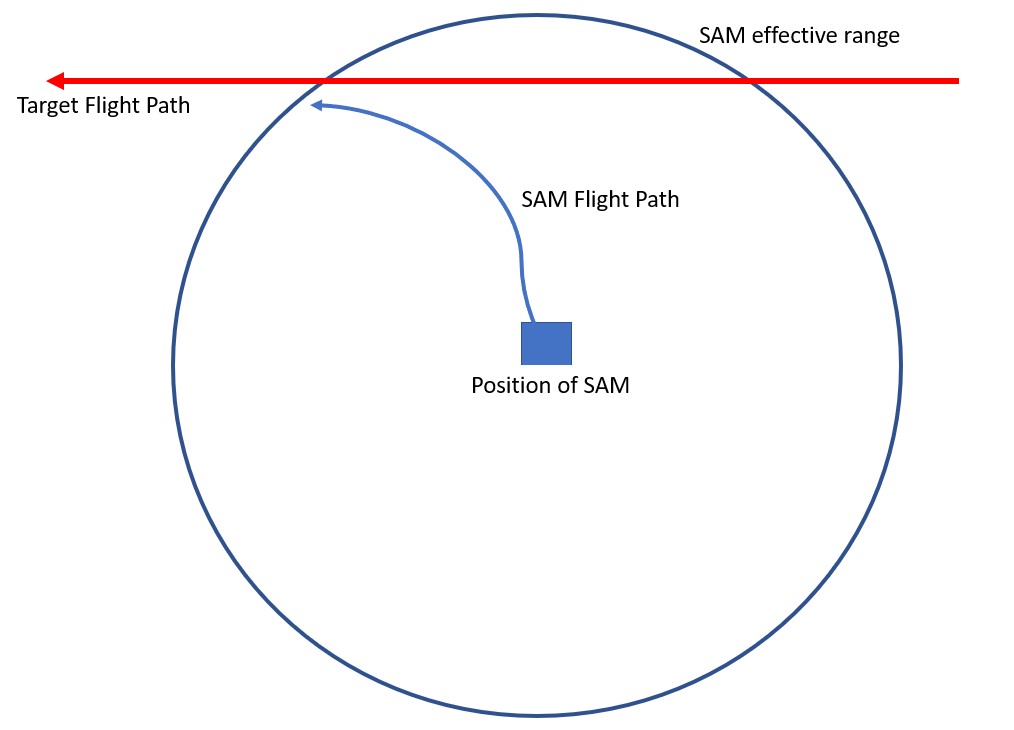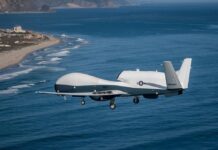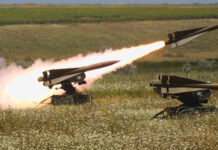On 15 November 2022, two Polish civilians were killed when a stray missile struck a tractor near the Polish village of Przewodów, located approximately 7.5 km from the Polish-Ukrainian border. The missile had originated from over the border, but conflicting reports quickly began to emerge regarding the nature and origin of the strike. ESD provides a brief overview and analysis of what is known so far and examines possible explanations.
On the evening the attack took place, AP and others initially reported that multiple missiles had crossed over the border into Poland.[1] As the story developed, local Polish media Radio ZET and CNN cited a figure of two missiles having struck Poland.[2] By the morning of 16 November, Reuters along with most news outlets began to focus on one confirmed missile strike, with imagery emerging of a large crater and a damaged tractor trailer.[3] At present, the final number of missiles which struck Poland has still not been confirmed, beyond the one responsible for the loss of life. It may require days or even weeks for an official final tally to emerge, pending investigation.
Regarding the origin of the missiles, initial suspicion fell on Russia, given that the same day it had reportedly launched numerous attacks on Ukraine’s power generation facilities. The Financial Times cited the Ukrainian Air Force in stating that Russia had launched approximately 90 cruise missiles that day, including Kh-101/Kh-555 air-launched cruise missiles and Kalibr family ship or submarine-launched cruise missiles, with Ukraine’s Air Force claiming to have intercepted 73 of these.[4] However, following this, imagery of a portion of the missile appeared on social media, and analysis by Calibre Obscura’s Ukraine-focussed account ‘Ukraine Weapons Tracker’, noted that component appears to be part of the 48D6 engine’s nozzle assembly, and therefore would have most likely come from a 5V55 used by the S-300P family, or possibly from a 48N6 series missile used by both the S-300P family and S-400.[5]
Although other missile types (48N6-series and possibly others) also use a very similar design, these aren't available to Ukrainian forces.
It's important to note here that this ID is only of this fragment; we can't be sure if nothing else landed or precisely how this happened. pic.twitter.com/H35cMTHGZw
— 🇺🇦 Ukraine Weapons Tracker (@UAWeapons) November 15, 2022
This in of itself does not guarantee a definite origin, and claims such as the New York Times’ that the missile was “Russian-Made” are as yet premature conclusions.[6] The 5V55 was designed by then-Soviet KB Fakel, in Moscow, and were primarily manufactured at the PO Severniy Zavod near St Petersburg.[7] However, the 5V55 was also manufactured by Zhuliany Machine-Building Plant Vizar, located on the outskirts of Kyiv.[8] In addition to this, Ukraine has maintained the industrial capability to develop the S-300PS/PT air defence systems it inherited from the USSR, with 5V55 missile life extension conducted by the Pivdenne Design Bureau pre-2020, a project which included servicing of the missiles’ 48D6 engines. On 30 June 2020, Ukrainian industry news site Uprom reported that Ukraine was launching a project to modernise its S-300P series air defence systems, with the Pivdenne Design Bureau and Pavlogradskiy Chemical Plant responsible for the project.[9] It is unclear how far along the project managed to get before the war broke out in February 2022, but shows Ukraine maintained sufficient industrial capacity to build and provide through-life services for the 5V55 series. The result is that the missile in question may have been of Soviet, or post-Soviet Russian, or post-Soviet Ukrainian origin.
Ultimately though, the origin of the missile matters less than the operator responsible for the launch. If the missile is indeed confirmed to have been a 5V55 series, then the likelihood that it was launched by Ukraine is nearly absolute. Surface-to-air missiles (SAMs) which miss their targets are sometimes known to continue onwards for great distances before they come down to earth. Such was the case on 1 July 2019, where a stray missile thought to have been a 5V28E from a Syrian S-200VE (Vega-E) system ended up landing in a wooded area North of Nicosia in Cyprus, more than 220 km away from its estimated launch position.[10] However, the nearest Russian S-300P formations are estimated to be more than 800 km away from the impact site in Poland, making it incredibly unlikely to be an errant Russian SAM at that kind of distance.
So, what (probably) happened?
With Poland’s geographic position to the West of Ukraine, many may be wondering how it came to be that a Ukrainian missile would be able to land in Poland if it was attempting to defeat an inbound Russian missile which was presumably on an East-to-West heading. The most likely culprit here is that this was not a head-on engagement, but rather a ‘crossing target’ engagement.
In these engagements, the SAM system is not positioned directly in the approach or departure path of the target, so for a large portion of the engagement, the target is effectively side-on to the missile. To ensure a successful intercept, many missiles including 5V55 use proportional navigation (P-nav) guidance logic, which requires keeping the missile angle at a constant bearing relative to the threat as the range between the two decreases. Effectively, rather than aiming directly for the target, the missile is guided toward a natural impact point further along the predicted flight path of the target, where the missile will pass close enough to the target for its proximity fuze to initiate the warhead. This is a fairly effective system, but if the target manoeuvres during the engagement, this requires a corresponding change to the missile’s trajectory. To go back to the Przewodów Incident example, if the target missile was engaged while it was heading Westwards, but its trajectory cut across the defending SAM’s protected area, rather than heading toward the SAM, this would have required the interceptor missile to adopt a corresponding predicted impact point even further West of the threat missile’s current position, thereby orienting the interceptor missile in the direction of Poland, so that its future position would bring it into proximity with the threat missile. In of itself, this doesn’t pose a threat to Poland, unless the missile misses its target, which appears to be what happened.

Credit: ESD
The 5V55 series specifically use a subset of Semi-Active Radar Homing (SARH) guidance known as Track-Via-Missile (TVM). This system works by having the fire control radar illuminate the target, however instead of the missile measuring its own deviation from target and making guidance corrections autonomously as with conventional SARH, in TVM the data is fed to the ground station via a radio datalink, and the ground station in turn computes the necessary guidance corrections and feeds these back to the missile via radio datalink. This offers better jamming resistance, and the ground station would typically have improved information processing capabilities, which can improve overall accuracy. In addition to the S-300P series, this system was also used by the S-300V series, some missiles in the S-400 family, and early missiles in the PATRIOT family. In terms of the possible cause of the Przewodów incident, SARH and TVM guidance would have likely functioned fairly similarly.
When using either SARH or TVM guidance, as in the 5V55 series, various potential problems can arise when engaging crossing targets. A particular problem is that the illuminating fire control radar is more likely to encounter some sort of terrain obstruction when tracking a crossing target, compared to in a head-on or tail-on engagement. This means more opportunities for terrain or obstacles to break the target lock, or for a missile to move out of the fire control radar’s field of regard if the radar has been set to operate in staring mode (wherein the antenna remains in a fixed position and does not rotate). While the terrain is relatively flat in Eastern Ukraine, around Lviv where the launch probably took place from, the terrain is a lot hillier, with many hills higher than 400 m. These could provide plenty of potential opportunities for an illumination radar to lose a target track part-way through an engagement. If the target track is lost, the missile would likely continue along its final trajectory until it runs out of momentum and crashes. ESD assesses that this would be a good candidate for explaining the cause for the incident.

Credit: Ukrainian MoD
To prevent wayward missiles from causing the harm they are fully capable of, many modern SAMs tend to be fitted with a time-based self-destruct fuze. This is typically activated at launch, and starts a countdown timer which activates the warhead at a point in time where the missile has expended most of its useful energy and is no longer likely to be able to hit an aerial target, but may still pose a threat to people on the ground. However, the Soviet and Russian school of SAM design often intended their missiles, including the 5V55 series, to be capable of engaging ground targets if required. Indeed, Russia has been observed used their SAMs as surrogate rocket artillery systems at several points during the War in Ukraine. Using SAMs in this manner means that the missile may have an unconventionally long flight time, thereby making self-destruct fuzes impractical in such tactical scenarios. As such, these missiles will remain potentially lethal after they have run out of sufficient energy to be a threat to aerial targets.
Where Do We Go from Here?
The Przewodów Incident was the first of the War in Ukraine to have directly resulted in the first civilian deaths inside a NATO member state. The deaths of Polish citizens caused by foreign action on their territory would have on paper been sufficient cause for Poland to invoke NATO’s Article 5 if it had decided to. However, in the real world, there is a little bit more complexity at play.
Before Poland could invoke Article 5, it would need to be very sure who attacked it, which would in practical terms mean conducting an investigation into the incident before selecting this option. Secondly, it is understood by most governments that accidents happen in war, and as tragic as they are, invoking collective defence in the wake of an isolated accident would go against the spirit of the agreement, which would matter on a political level to leaders of the alliance. Finally, the invocation of Article 5 does not in of itself call for military mobilisation of the alliance at large, as NATO’s website explains:
“With the invocation of Article 5, Allies can provide any form of assistance they deem necessary to respond to a situation. This is an individual obligation on each Ally and each Ally is responsible for determining what it deems necessary in the particular circumstances.
This assistance is taken forward in concert with other Allies. It is not necessarily military and depends on the material resources of each country. It is therefore left to the judgment of each individual member country to determine how it will contribute.”[11]

CREDIT: NATO
Thus far, NATO allies have indicated that Russia is not the proximate cause of the incident, with NATO Secretary General Jens Stoltenberg stating at a briefing on 16 November 2022:
“Our preliminary analysis suggests that the incident was likely caused by a Ukrainian air defence missile fired to defend Ukrainian territory against Russian cruise missile attacks. But let me clear: this is not Ukraine’s fault. Russia bears ultimate responsibility as it continues its illegal war against Ukraine.”[12]
Given this position, it is fairly unlikely that the incident will cause real escalation between NATO and Russia, however it remains an important lesson that accidents continue to happen in war, and lethal effects are not always constrained by borders.
Mark Cazalet
[1] https://twitter.com/AP/status/1592593237902036992
[2] https://wiadomosci.radiozet.pl/Polska/rakiety-spadly-na-polske-sa-ofiary-smiertelne and https://edition.cnn.com/europe/live-news/russia-ukraine-war-news-11-15-22/h_1927d9c23cdecd76a1013ba4b733de6b
[3] https://www.reuters.com/world/europe/ukraine-hails-chinas-opposition-nuclear-threats-2022-11-15/
https://twitter.com/Faytuks/status/1592580008505401344
[4] https://www.ft.com/content/749cd7cf-c29d-4508-b2ea-e4f95fa16d2b
[5] https://twitter.com/UAWeapons/status/1592629257469321216/photo/1
[6] https://www.nytimes.com/2022/11/15/world/europe/poland-ukraine-russia-nato.html
[7] http://pvo.guns.ru/s300p/index.htm
https://bastion-karpenko.ru/s-300p/
https://русская-сила.рф/guide/army/bp/5v55.shtml
[8] http://uoe.com.ua/products/en/?id=0&pid=catalogue&language=eng&catalogue_id=236&type=content
[9] https://uprom.info/news/vpk/kb-pivdenne-ta-pavlogradskyj-himichnyj-zavod-opraczovuyut-proyekt-modernizacziyi-zrk-s-300/
[10] https://www.bbc.com/news/av/world-middle-east-48826492
http://pvo.guns.ru/s200/i_dubna.htm#60











